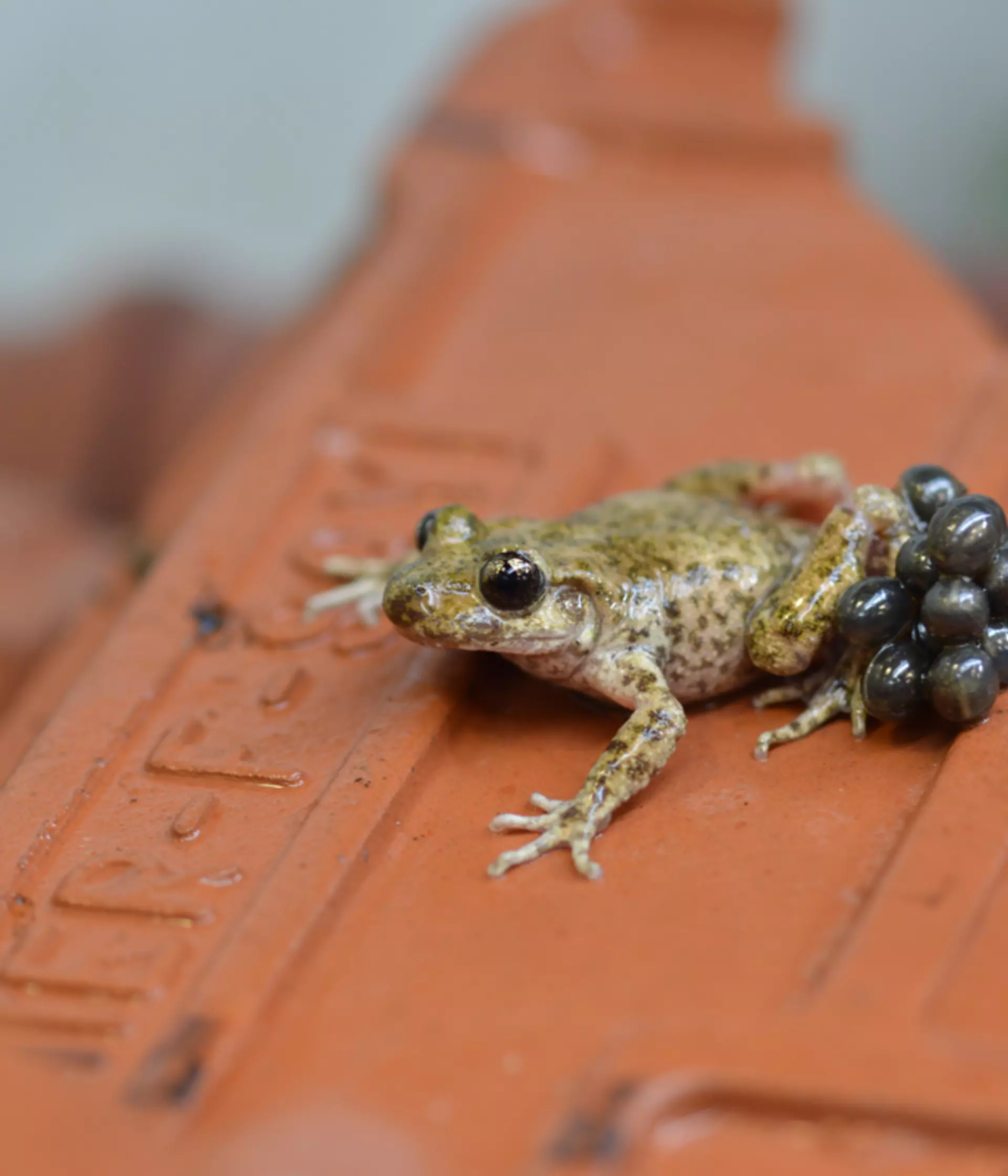
Mallorcan midwife toad facts
-
Like all midwife toads, the male Mallorcan midwife toad will carry the egg string wrapped around his hind limbs. The eggs develop and the male toad will return to water to deposit the tadpoles when they are ready to hatch. The tadpoles can take more than a year to develop.
-
The Mallorcan midwife toad was described from fossils in 1977 (at that time it was presumed to be extinct). The first living toads were found in 1979. They are threatened by invasive species that were introduced by the Romans.
-
Mallorcan midwife toads get their local name ‘Ferreret’ from the sound of their vocalisations; Ferreret means little metal worker in Balearic Catalan and Spanish, and their call apparently sounds like metal being hit with a hammer.
What do Mallorcan midwife toads eat?
Mallorcan midwife toads eat small invertebrates.

Mallorcan midwife toad threats
The major threats to this species are predation by the introduced Viperine Snake (Natrix maura), and competition for space with the introduced Perez's Frog (Rana perezi). Development of tourism and human settlements, specifically the increased need for water resources (including damming and canalization of streams), is an additional threat, as is high human pressure on karstic creeks for recreational purposes, with the potential for the spread of disease agents. Chytridiomycosis is considered to be a major threat.
Mallorcan midwife toad conservation
Our reptile and amphibian team have developed husbandry techniques, we have published on the reproductive biology of this species and we are currently working on a study using this organism as a model to ascertain whether or not UVB provision is important for larval development with the aim of informing the captive husbandry for all amphibians. ZSL and partners focus on mitigating against this disease in nature for many years and in 2016 the causative agent of the disease was successfully removed from one site.
